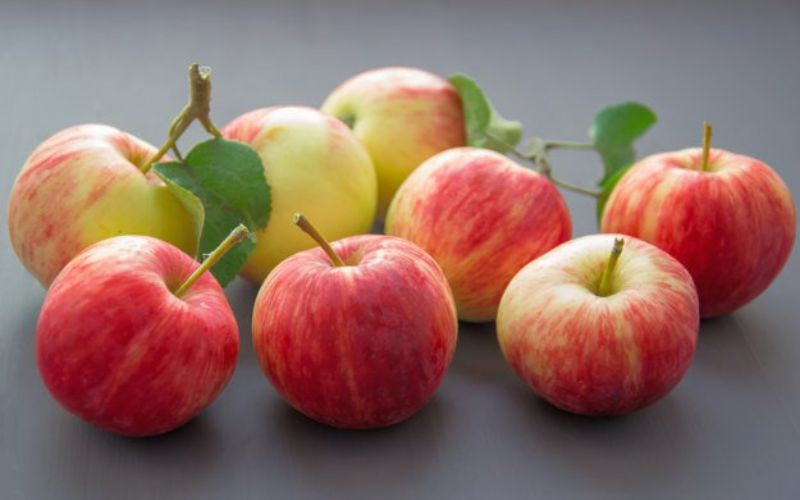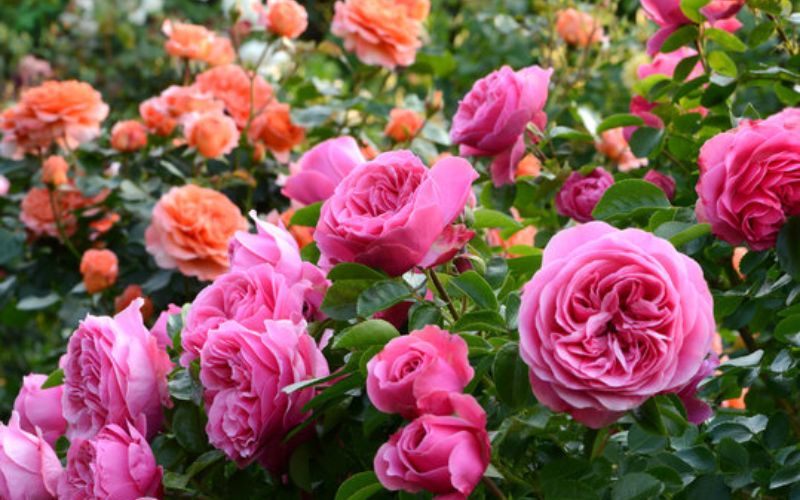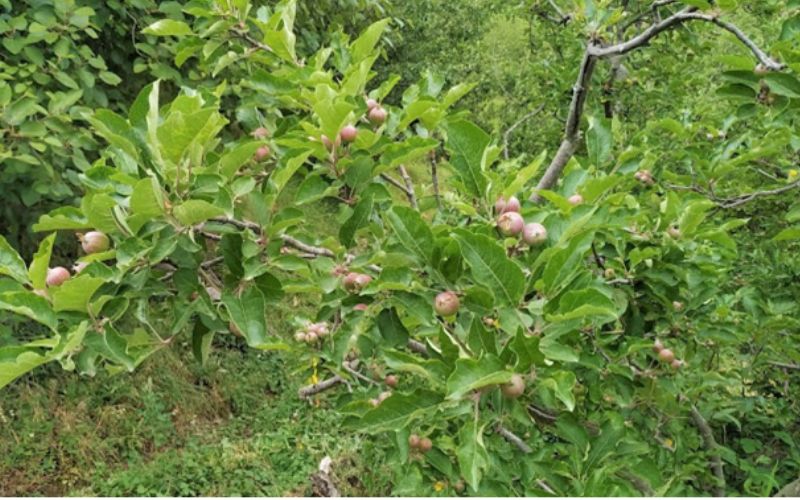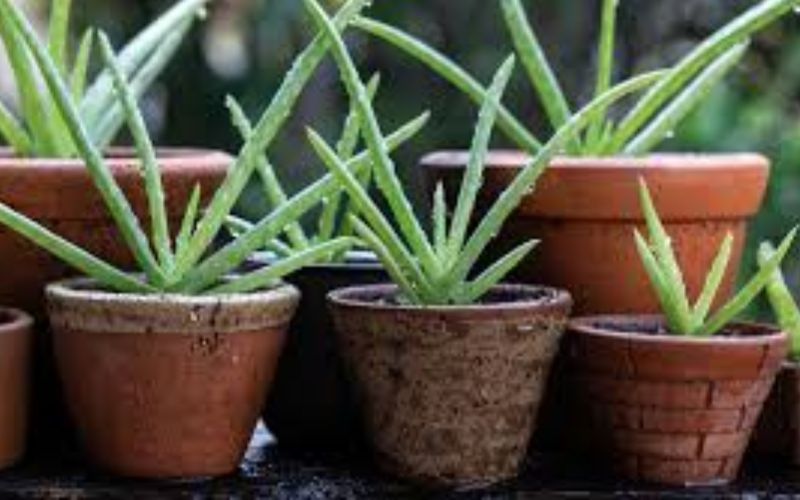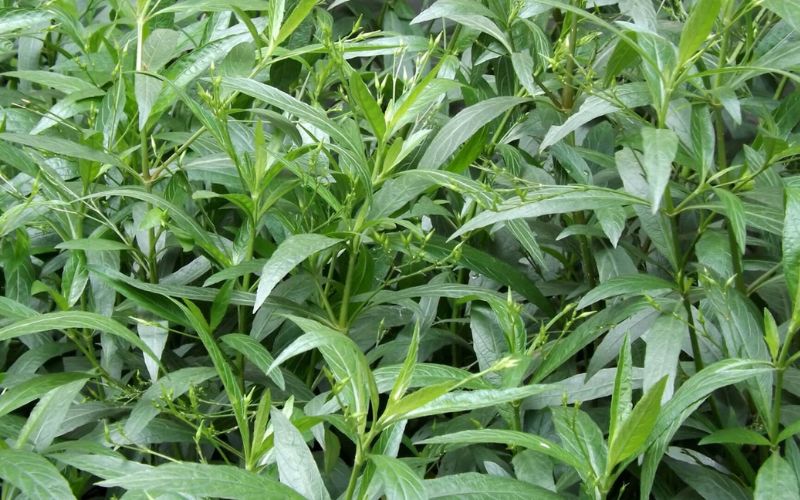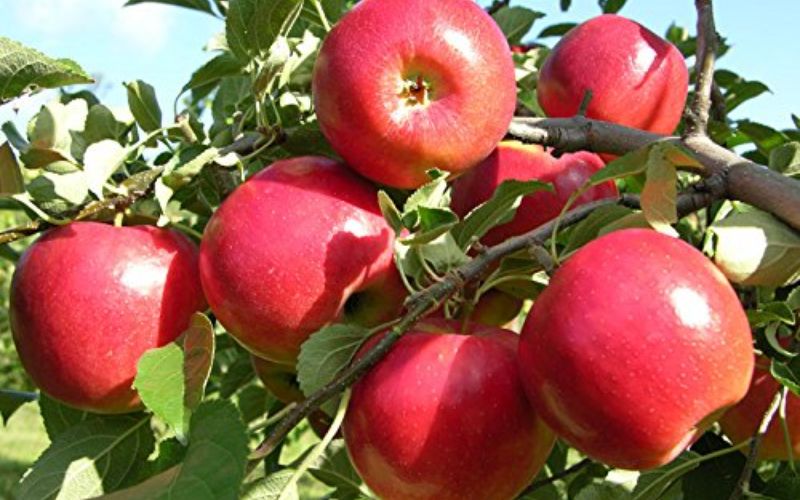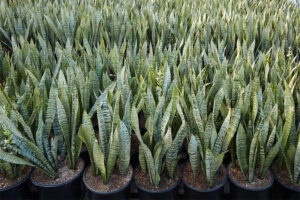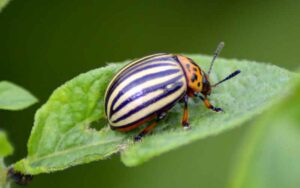Interior Landscape Plants for Minimizing Indoor Air Pollution Abatement
Introduction
In 1989, a team at NASA (National Aeronautics and Space Administration), USA conducted its ‘clean air study’ to investigate the naturally filtering properties of plant life. NASA had conducted the study in response to the ‘sick building syndrome,’ as it came to be known late into 20th century. During that time, fresh air exchange in buildings was sacrificed in favor of reduced energy usage — to lower the cost of heating and cooling a building, interiors were super-insulated sealed air tight. Of course, this condition saw the rise of various illnesses transmitted due to the lack of natural ventilation and fresh air. At the same time, that era saw the use of synthetic building materials that gradually emitted harmful ‘off-gases.’ the team of researchers at NASA conclude that in addition to the use of safer building materials and the minimization of mechanical ventilation, indoor air pollution can be greatly mitigated by the introduction of ‘nature’s life support system,’ plants.
The NASA clean air study concluded that certain plants can act a natural air filter to remove organic air pollutants — benzene, formaldehyde, and trichloroethylene were tested. As part of the study, which spanned two years, a collection of plants were placed in a sealed air chamber and exposed to high concentration of the chemicals. Researchers then documented the percentage of the chemical that had been removed from the sealed space after a 24 hour period. Below is a list of the top 21 out of 50 plants that NASA determined to be the most effective at naturally filtering out indoor air pollutants.
The rapidly increasing pollution in the atmosphere is affecting the health of the people. To avoid this, people are doing different experiments. From applying masks to catering, people are paying special attention. There are some plants, which can be planted inside the house to get fresh and clean air as well as keep your health safe from pollution.
Erica Palm
 This plant grows up to a height of about three to five feet. The amount of light that comes in through the window is sufficient for this. These plants survive even in less water. Thus they are useful plants as indoor plants. These help filter xylene and toluene from the air and also act as an effective humidifier.
This plant grows up to a height of about three to five feet. The amount of light that comes in through the window is sufficient for this. These plants survive even in less water. Thus they are useful plants as indoor plants. These help filter xylene and toluene from the air and also act as an effective humidifier.
Chrysanthemum
 Chrysanthemum is one of the most popular flowering plants categorized under genus chrysanthemum in the family Asteraceae. It was found to be one of the most effective plants which removes benzene, formaldehyde, trichloroethylene, ammonia, xylene, toluene and several other known pollutant from the air.
Chrysanthemum is one of the most popular flowering plants categorized under genus chrysanthemum in the family Asteraceae. It was found to be one of the most effective plants which removes benzene, formaldehyde, trichloroethylene, ammonia, xylene, toluene and several other known pollutant from the air.
Flamingo Lily
 Anthurium is popular gift plant, it is a species in the plants family Araceae, native to Colombia and Ecuador. Anthuriums have heart shape shiny green leaves and beautiful flowers which last for several months after bloom. It is effective in leaning formaldehyde, ammonia, xylene and toluene from the air.
Anthurium is popular gift plant, it is a species in the plants family Araceae, native to Colombia and Ecuador. Anthuriums have heart shape shiny green leaves and beautiful flowers which last for several months after bloom. It is effective in leaning formaldehyde, ammonia, xylene and toluene from the air.
Peace Lily
 According to research done by NASA, peace lily is considered very well for getting rid of formaldehyde, beta benzene and trichloroethylene. It is most useful in terms of cleaning the air in the breathing space. Peace lily plants also look different from other plants and the top part of it stands out like a snake’s hood. The plant requires low light and weekly watering to survive.
According to research done by NASA, peace lily is considered very well for getting rid of formaldehyde, beta benzene and trichloroethylene. It is most useful in terms of cleaning the air in the breathing space. Peace lily plants also look different from other plants and the top part of it stands out like a snake’s hood. The plant requires low light and weekly watering to survive.
Money Plant
 Money plant is one of the most common house plants, it is a species of the plant family Araceae, native to French Polynesia. Money plant is one of the hardiest plants which do well in most of the indoor environmental conditions. It is effective in cleaning benzene, formaldehyde, trichloroethylene, xylene and toluene from the air. The plant requires low light and weekly watering to survive.
Money plant is one of the most common house plants, it is a species of the plant family Araceae, native to French Polynesia. Money plant is one of the hardiest plants which do well in most of the indoor environmental conditions. It is effective in cleaning benzene, formaldehyde, trichloroethylene, xylene and toluene from the air. The plant requires low light and weekly watering to survive.
English Ivy
 English Ivy is one of the most popular vine plants in Europe, it is a species of flowering plant in the family Araliaceae, native to most of Europe and western Asia. English Ivy was found to be one of the most effective plants which removes benzene, formaldehyde, trichloroethylene, xylene and toluene from the air. The plant requires low light and weekly watering to survive.
English Ivy is one of the most popular vine plants in Europe, it is a species of flowering plant in the family Araliaceae, native to most of Europe and western Asia. English Ivy was found to be one of the most effective plants which removes benzene, formaldehyde, trichloroethylene, xylene and toluene from the air. The plant requires low light and weekly watering to survive.
Weeping Fig
 This leafy plant is long lived and provides amazing results if you learn how to take care of it and it belongs family Moraceae. It helps against dust settling from curtains, carpets and furniture. Time for the weeping fig to grow up but once it comes in full form, then it can be up to 10 feet. One thing you should keep in mind is that this plant should not be moved around too much. Its leaves fall easily. Keep it in indirect light. Also, keep it away from direct cold or hot air and away from doors. It also causes dropping of its leaves. It is a long-lived plant, you can enjoy its beauty for many years.
This leafy plant is long lived and provides amazing results if you learn how to take care of it and it belongs family Moraceae. It helps against dust settling from curtains, carpets and furniture. Time for the weeping fig to grow up but once it comes in full form, then it can be up to 10 feet. One thing you should keep in mind is that this plant should not be moved around too much. Its leaves fall easily. Keep it in indirect light. Also, keep it away from direct cold or hot air and away from doors. It also causes dropping of its leaves. It is a long-lived plant, you can enjoy its beauty for many years.
Warneck Dracaena
 These indoor plants grow up to 12 feet in height and it belongs family Asparagacy. They do not need much sunlight. These protect us from the pollutants usually found in varnish and purify the environment. This plant does not require direct sunlight. It can grow up to 12 feet in height, so be sure to plant it in a location that will allow it enough room to grow. Also, you can control its height by trimming. Yellow leaves on Warneck Dracaena plants are a sign of overwatering or poor drainage. In homes, it can be kept near a curtain or window.
These indoor plants grow up to 12 feet in height and it belongs family Asparagacy. They do not need much sunlight. These protect us from the pollutants usually found in varnish and purify the environment. This plant does not require direct sunlight. It can grow up to 12 feet in height, so be sure to plant it in a location that will allow it enough room to grow. Also, you can control its height by trimming. Yellow leaves on Warneck Dracaena plants are a sign of overwatering or poor drainage. In homes, it can be kept near a curtain or window.
Heart Leaf Philodendron
 This is also an indoor plant and belongs family Araceae, which can be kept at home or office. This plant is not a good choice if you have pets. It is poisonous in nature. Heart Leaf Philodendron is useful for removing all types of VOCs i.e. Volatile Organic Compounds.
This is also an indoor plant and belongs family Araceae, which can be kept at home or office. This plant is not a good choice if you have pets. It is poisonous in nature. Heart Leaf Philodendron is useful for removing all types of VOCs i.e. Volatile Organic Compounds.
Chinese Evergreen
 This plant also blooms in low light conditions and it filters many types of air pollutants. It works even in mild sunlight and it belongs family, Araceae . The Chinese evergreen plant needs water only when its soil starts to look dry.
This plant also blooms in low light conditions and it filters many types of air pollutants. It works even in mild sunlight and it belongs family, Araceae . The Chinese evergreen plant needs water only when its soil starts to look dry.
Rhododendron
 Rhododendrons and azaleas belong to the genus Rhododendron of the Ericaceae family. This plant means ‘rose tree’ in Greek. It is a flowering shrub, which can be grown comfortably in cold areas, but where there is light. This helps against formaldehyde released from plywood and foam insulation.
Rhododendrons and azaleas belong to the genus Rhododendron of the Ericaceae family. This plant means ‘rose tree’ in Greek. It is a flowering shrub, which can be grown comfortably in cold areas, but where there is light. This helps against formaldehyde released from plywood and foam insulation.
Bamboo Palm
 This plant is also known as Reed Palm. It can survive in a shady home and it belongs family Arecaceae. It filters out pollutants such as benzene and trichloroethylene and also filters out pollutants formaldehyde and trichloroethylene from furniture so can be placed around furniture.
This plant is also known as Reed Palm. It can survive in a shady home and it belongs family Arecaceae. It filters out pollutants such as benzene and trichloroethylene and also filters out pollutants formaldehyde and trichloroethylene from furniture so can be placed around furniture.
Green Spider Plant
 This spider-like indoor plant helps purify the air and it belongs family Asparagaceae. It needs less water in summer, so this plant can be kept in summer season also. This lovely plant protects against benzene formaldehyde, carbon monoxide and solvents used in the leather, rubber and printing industries. The plant is also known for its uniquely shaped leaves, which hang like spiders.
This spider-like indoor plant helps purify the air and it belongs family Asparagaceae. It needs less water in summer, so this plant can be kept in summer season also. This lovely plant protects against benzene formaldehyde, carbon monoxide and solvents used in the leather, rubber and printing industries. The plant is also known for its uniquely shaped leaves, which hang like spiders.
Snake Plant
 This plant is best suited for bathrooms, as it can survive in low light and moist areas. It filters out formaldehyde, which is commonly found in products used in personal care and it belongs family Asparagaceae. It is one of the top air purifying plants identified by NASA. These plants are the easiest to grow and do not require extra attention. If you are going out of town and there is no one to take care of your plants, then no worries. This plant can survive without water for weeks and still get long, fresh leaves. This plant is also called mother-in-law’s tongue or St.George’s sword.
This plant is best suited for bathrooms, as it can survive in low light and moist areas. It filters out formaldehyde, which is commonly found in products used in personal care and it belongs family Asparagaceae. It is one of the top air purifying plants identified by NASA. These plants are the easiest to grow and do not require extra attention. If you are going out of town and there is no one to take care of your plants, then no worries. This plant can survive without water for weeks and still get long, fresh leaves. This plant is also called mother-in-law’s tongue or St.George’s sword.
Red-edged Dracaena
 Dracaena (Dracaena marginata) plant placed in the family Asparagaceae also known as dragon tree, is an attractive, stiff-leaved plant with green sword-like. It filters out varnish gases like xylene, trichloroethylene and formaldehyde. These gases are released from varnishes and sealers. The leaves of this plant look red in the front edges. Rubber Indoor Plant This plant is a very good indoor plant. The rubber indoor plant is toxic to humans and animals and should be kept away from the eyes or skin, but is a great air filter plant.
Dracaena (Dracaena marginata) plant placed in the family Asparagaceae also known as dragon tree, is an attractive, stiff-leaved plant with green sword-like. It filters out varnish gases like xylene, trichloroethylene and formaldehyde. These gases are released from varnishes and sealers. The leaves of this plant look red in the front edges. Rubber Indoor Plant This plant is a very good indoor plant. The rubber indoor plant is toxic to humans and animals and should be kept away from the eyes or skin, but is a great air filter plant.
Cornstalk Dracaena
 Dracaena fragrans ‘Massangeana’ is another popular and common houseplants, it is a species from dracaena genus counted under asparagaceae plants family. The plant is hardy to adverse weather conditions and suits to grow indoors and it belongs Family Asparagaceae. It is effective in cleaning benzene, formaldehyde and trichloroethylene from the air. Below are its grow habits and overview as a houseplant: Light Shade, artificial light, Watering Less and Temperature (5 to 45) degree Celsius is tolerable.
Dracaena fragrans ‘Massangeana’ is another popular and common houseplants, it is a species from dracaena genus counted under asparagaceae plants family. The plant is hardy to adverse weather conditions and suits to grow indoors and it belongs Family Asparagaceae. It is effective in cleaning benzene, formaldehyde and trichloroethylene from the air. Below are its grow habits and overview as a houseplant: Light Shade, artificial light, Watering Less and Temperature (5 to 45) degree Celsius is tolerable.
Barberton Daisy
Common names: Gerbera, gerbera daisy, Transvaal daisy, barbertonse madeliefie
Botanical name: Gerbera jamesonii,
 Gerbera is one of the most popular flowering plants with diverse colored shining flowers, it is a genus of plants in the flowering plants family Asteraceae (daisy family). The plant is hardy to adverse weather conditions and suits to grow in bright light. It is effective in cleaning benzene, formaldehyde and trichloroethylene from the air. Below are its grow habits and overview as a houseplant: Indoors, bright light, less watering and Temperature (15 to 25) degree Celsius is tolerable.
Gerbera is one of the most popular flowering plants with diverse colored shining flowers, it is a genus of plants in the flowering plants family Asteraceae (daisy family). The plant is hardy to adverse weather conditions and suits to grow in bright light. It is effective in cleaning benzene, formaldehyde and trichloroethylene from the air. Below are its grow habits and overview as a houseplant: Indoors, bright light, less watering and Temperature (15 to 25) degree Celsius is tolerable.
Aloe vera
Common names: Aloe, aloe vera, ghritkumari
Botanical name: Aloe bar-badensis mill,
 Aloe vera is a succulent plant species of the genus aloe categorized under plants family Asphodelaceae, it is one of the most amazing plants which is beneficial for a multitude of problems, its been used for medicinal purpose from ancient times. It is hardy to adverse weather conditions and suits to grow in bright light and deserts. It is effective in cleaning benzene and formaldehyde. Below are its grow habits and overview as a houseplant: indoors, bright light, Less Watering and Temperature (15 to 45) degree Celsius is tolerable.
Aloe vera is a succulent plant species of the genus aloe categorized under plants family Asphodelaceae, it is one of the most amazing plants which is beneficial for a multitude of problems, its been used for medicinal purpose from ancient times. It is hardy to adverse weather conditions and suits to grow in bright light and deserts. It is effective in cleaning benzene and formaldehyde. Below are its grow habits and overview as a houseplant: indoors, bright light, Less Watering and Temperature (15 to 45) degree Celsius is tolerable.
Rubber Plant
Common names: Rubber plant, ficus elastica
Botanical name: Ficus elastica,
 Rubber Plant is species under genus ficus categorized in the plants family Moraceae, native to south asia. The plant is found to be effective in cleaning formaldehyde. Below are its grow habits and overview as a houseplant: Indoors, artificial light, Less watering and Temperature (15 to 30) degree Celsius is tolerable.
Rubber Plant is species under genus ficus categorized in the plants family Moraceae, native to south asia. The plant is found to be effective in cleaning formaldehyde. Below are its grow habits and overview as a houseplant: Indoors, artificial light, Less watering and Temperature (15 to 30) degree Celsius is tolerable.
Dendrobium Orchids
Common names: Orchid
Botanical name: Dendrobium spp.
 Dendrobium, is also called cane orchids, they have smaller flowers of typically white or purple color that grow in rows on stalks that arise from thick canes. Dendrobium leaves are narrow and emerge from the sides of the cane. Orchids are found to be effective in cleaning xylene and toluene from the air. Below are its grow habits and overview as a houseplant: Indoors, require artificial light, Less Watering and Temperature (15 to 30), degree Celsius humidity 60-80 required.
Dendrobium, is also called cane orchids, they have smaller flowers of typically white or purple color that grow in rows on stalks that arise from thick canes. Dendrobium leaves are narrow and emerge from the sides of the cane. Orchids are found to be effective in cleaning xylene and toluene from the air. Below are its grow habits and overview as a houseplant: Indoors, require artificial light, Less Watering and Temperature (15 to 30), degree Celsius humidity 60-80 required.
Dumb Canes
 Common names: Dieffenbachia, dunb cane
Common names: Dieffenbachia, dunb cane
Botanical name: Dieffenbachia spp.,
Dieffenbachia is a genus of tropical flowering plants in the family Araceae, native to the mexico. It is found to be effective in cleaning xylene and toluene from the air. Below are its grow habits and overview as a houseplant: Indoors, Shade Less Watering and Temperature (15 to 30) degree Celsius required.
Knowing Common Indoor Pollutants
Trichloroethylene: Found in printing inks, paints, lacquers, varnishes, adhesives, and paint removers. Symptoms associated with short-term exposure include: excitement, dizziness, headache, nausea, and vomiting followed by drowsiness and coma.
Formaldehyde: Found in paper bags, waxed papers, facial tissues, paper towels, plywood paneling, and synthetic fabrics. Symptoms associated with short-term exposure include: irritation to nose, mouth and throat, and in severe cases, swelling of the larynx and lungs.

Benzene: Used to make plastics, resins, lubricants, detergents, and drugs and found in tobacco smoke, glue, and furniture wax. Symptoms associated with short-term exposure include: irritation to eyes, drowsiness, dizziness, headache, increased heart rate, confusion and in some cases can result in unconsciousness.
Xylene: Found in rubber, leather, tobacco smoke, and vehicle exhaust. Symptoms associated with short-term exposure include: irritation to mouth and throat, dizziness, headache, confusion, heart problems, liver and kidney damage and coma.
Ammonia: Found in window cleaners, floor waxes, smelling salts, and fertilizers. Symptoms associated with short-term exposure include: eye irritation, coughing, sore throat.
Nitrogen Dioxide (NO2): This harmful gas is formed by emissions from vehicles and factories during the burning of fuel. It is high in concentration in regions that are congested with vehicles and traffic. The gas is a respirator irritant, causing specific damage to the cardiovascular and respiratory system. It is known to cause airway inflammation among healthy individuals.
Sulphur Dioxide (SO2): A highly reactive gas that carries a smell which is pungent and irritating, Sulphur dioxide is formed by the burning of fuels in industries and factories. Its presence in the air results in the irritation of the lining of lungs, throat and nose, worsing the symptoms of patients with existing respiratory diseases such as asthma, and other cardiovascular problems.
Suspended Particulate Matter: Suspended Particulate Matter, or SPM, refers to the suspended solid and liquid particles in the air that are too small in size to be seen with the naked eye. Its short effects include irritation of the eyes and the respiratory tract, with the long term exposure causing asthma and weaker cardiovascular function.

Summary
Low-light-requiring houseplants, along with activated carbon plant filters, have demonstrated the potential for improving indoor air quality by removing trace organic pollutants from the air in energy-efficient buildings. This plant system is one of the most promising means of alleviating the sick building syndrome associated with many new, energy efficient buildings. The plant root-soil zone appears to be the most effective area for removing volatile organic chemicals. Therefore, maximizing air exposure to the plant root-soil area should be considered when placing plants in buildings for best air filtration. Activated carbon filters containing fans have the capacity for rapidly filtering large volumes of polluted air and should be considered an integral part of any plan using houseplants for solving indoor air pollution problems.




